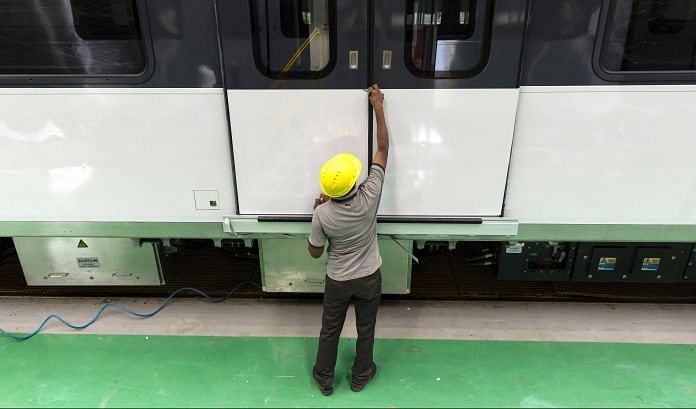India has failed to create jobs despite high economic growth, according to a study done by Azim Premji University.
New Delhi: Despite high economic growth, India has failed to create jobs, a study has found.
Currently, a 10 per cent increase in GDP results in less than 1 per cent increase in employment, indicating jobless growth in the economy, according to the study published by the Azim Premji University Tuesday.
It says the rate of unemployment among the youth and the highly educated has reached 16 per cent – “the highest seen in India in at least the last 20 years”.
These trends are particularly visible in the northern states, according to the study titled, ‘State of working India’. The study has been based on data compiled from the labour market, researchers, policymakers, journalists and civil society activists.
Disparity in employment
The report also shows that while labour productivity in the organised manufacturing increased by six times over the past three decades, wages increased by only 1.5 times. This reflects that employers have benefited far more from growth than the workers, the study suggests.
Also read: PM Modi has a new problem: Confidence of Indians in economy drops sharply
There is also an inter-sectional disparity in terms of jobs being available on the basis of caste and gender, the study says.
Women comprise only 16 per cent of all service sector workers, but 60 per cent of the domestic workers. This gender disparity also varies in different parts of the country. According to the study, only 20 women are in paid employment for every 100 men in UP, while this number is 50 in Tamil Nadu and 70 in the northeast.
However, the study also notes that the gender earning gap is now reducing over time. Scheduled castes form 18.5 per cent of all workers.
The industrial dilemma
The report shows that although there has been a growth in the performance of the manufacturing sector in the past decade, especially in industries such as knitwear, plastics, and footwear, the kind of work has also become more and more precarious through time.
Firms started hiring people on a contractual basis. “In place of permanent workers, firms have engaged various forms of contract and trainee workers who perform the same work at a fraction of the wages,” explained the study.
Employment in IT and modern retail grew from 11.5 per cent in 2011 to 15 per cent in 2015. However, the report suggests that more than 50 per cent of the service sector employment still continues to be in petty trade, domestic services and other informal employment.
The wages generated in the past decade and a half also increased a little but, remained much below the Seventh Pay Commission’s recommendation of the minimum salary bracket.
“Nationally, 67 per cent of the households reported monthly earnings of up to Rs 10,000 in 2015. In comparison, the minimum salary recommended by the Seventh Pay Commission is Rs 18,000 per month,” said the study.
“Wages in most sectors have grown steadily at around 3 per cent per year, but 82 per cent of male and 92 per cent of female workers earn less than Rs 10,000 a month,” it said.
Also read: India, world’s fastest growing economy, isn’t growing fast enough to create enough jobs
The way forward
The authors of the report suggest that the government needs to provide employment guarantee, in line with MNREGA scheme, in various other job spheres.
They also stressed on the need for an industrial policy that provides incentives to workers, such as skill development and wage subsidies. However, these need to be done through state-level employment analysis to keep in mind the diversity of employment in various states.
The report also stresses on the urgency of addressing issues in the agriculture sector where the income floor is set very low.




One hopes both incumbent and challenger are thinking deeply about this problem. Whoever comes to power next year should have some sort of a blueprint and get to work.